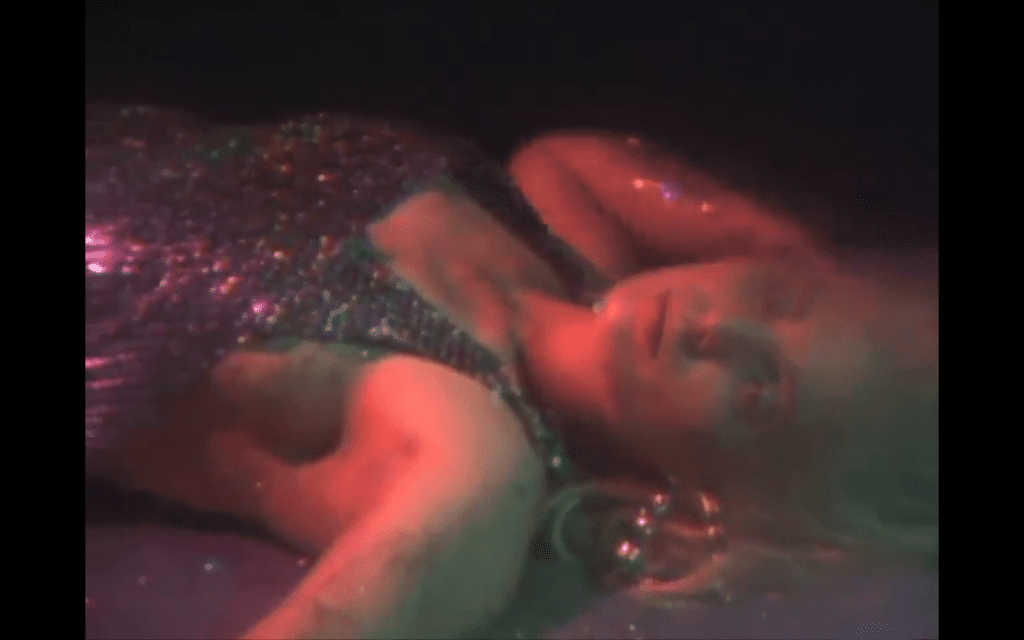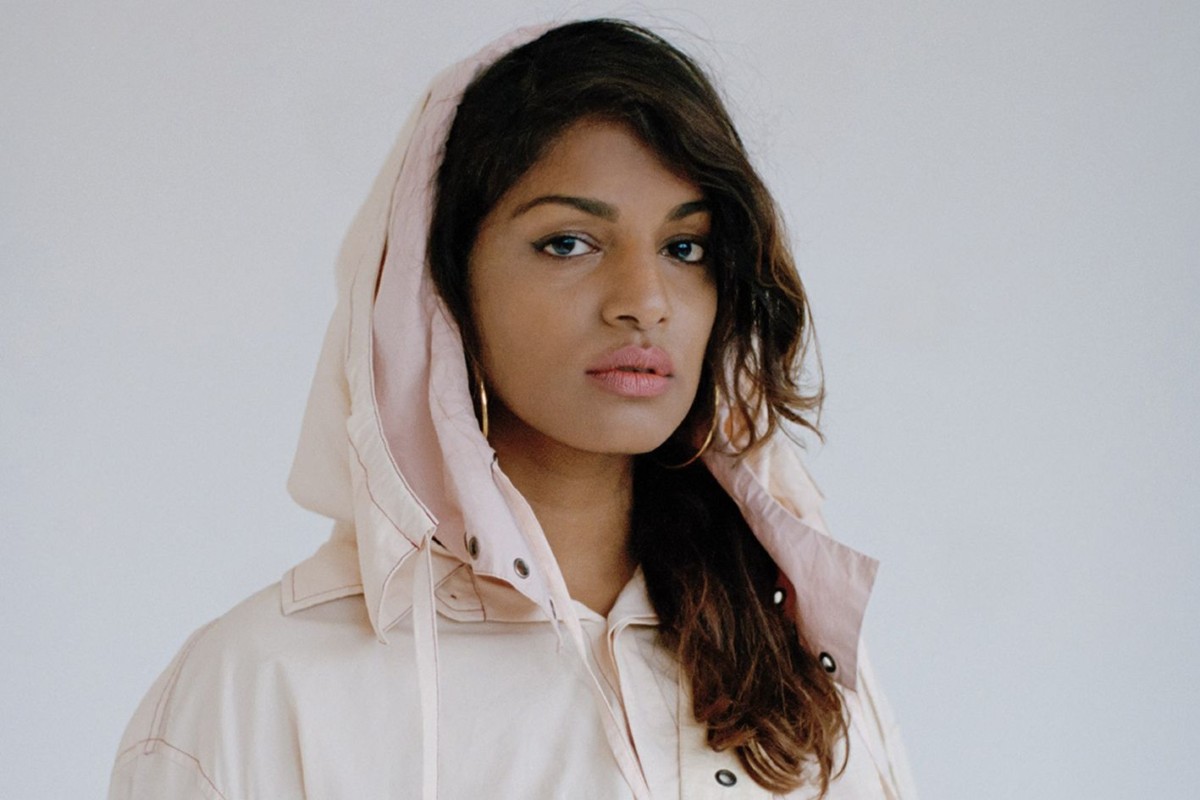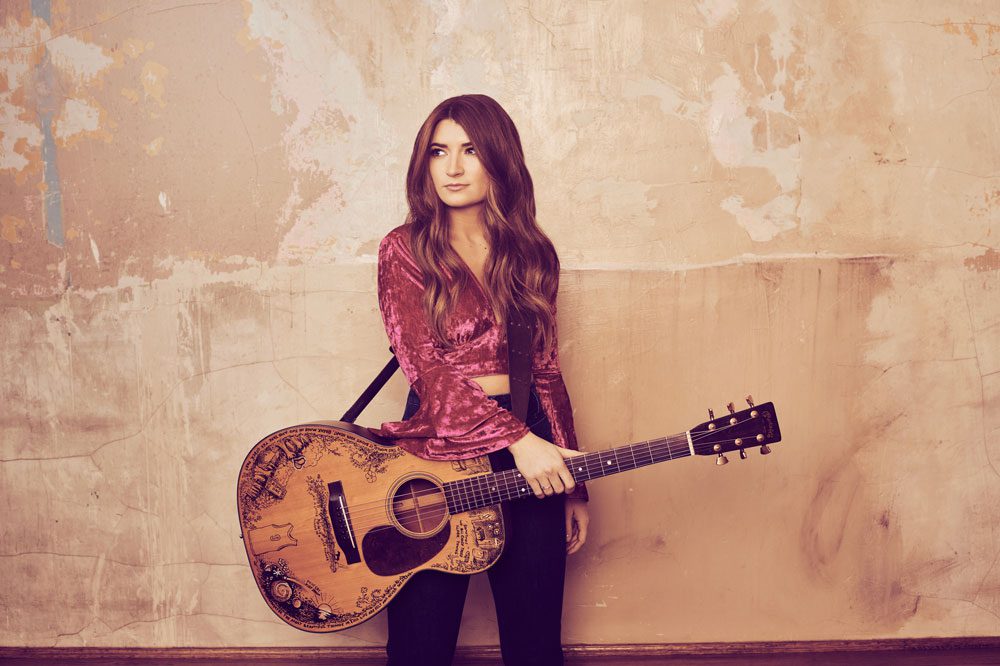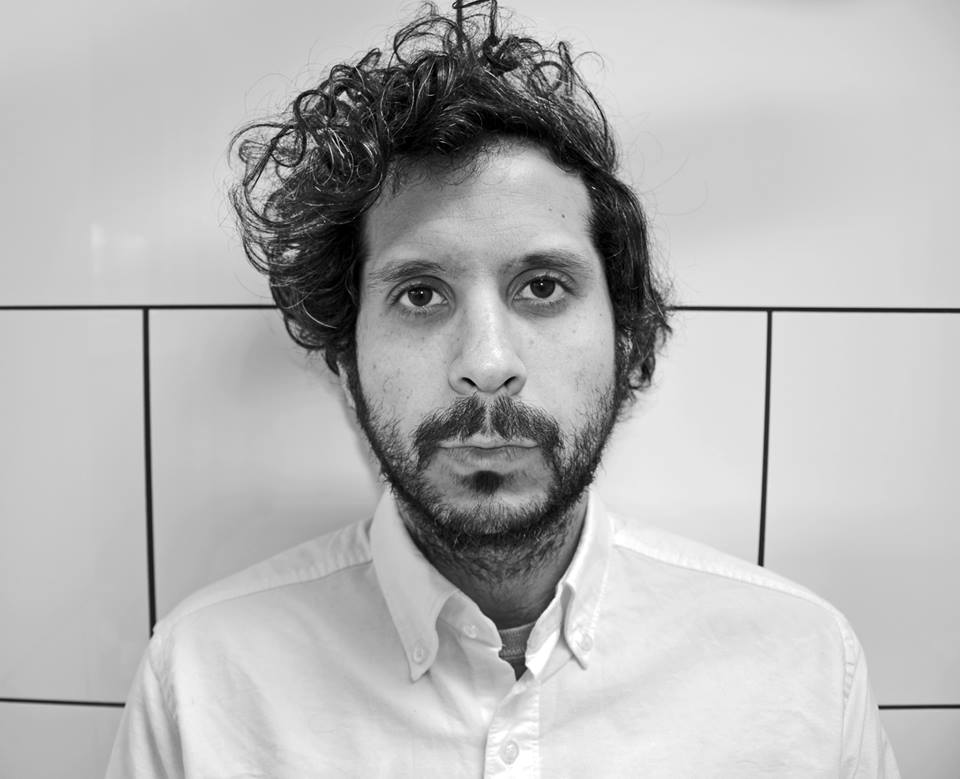ARTIST PROFILE: Emily Pelstring
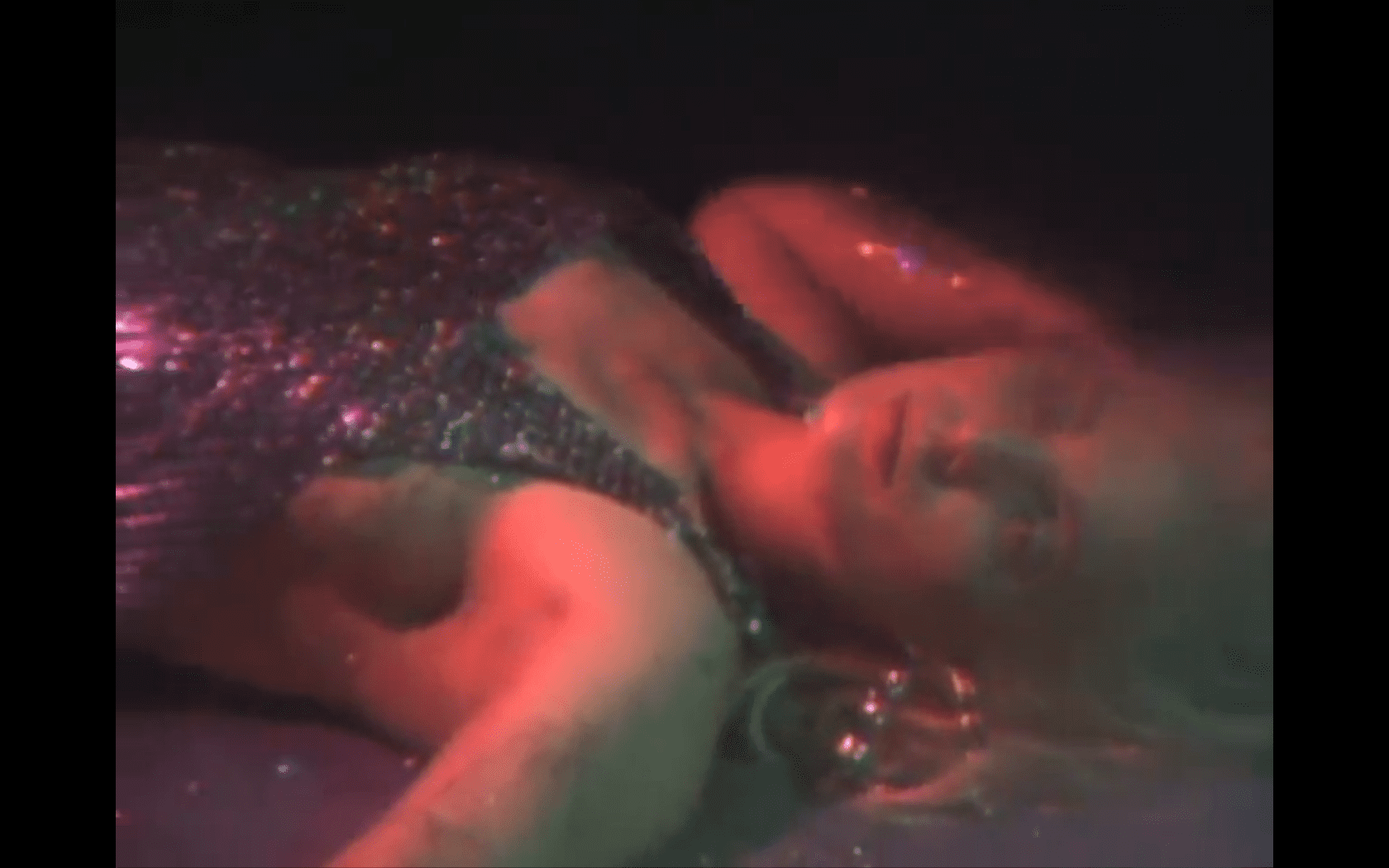
If the videos of Emily Pelstring were suits they’d be cut from outlandish cloth, but they would fit perfectly. Between her recent work with Meghan Remy, a.k.a U.S. Girls, and Canadian song-man Slim Twig, Pelstring has perfected the ability to depict artists as exaggerated forms of themselves, perhaps in part due to her fascination with the “politics of representation”. A self-professed postmodernist, Pelstring seems to be at ease with conveying various incarnations of identity, depending upon the quirks of the individual artist. There are instances when this portrayal appears so accurate, that it could even surprise the artists themselves, almost as if Pelstring extracted their very essence out of them.
While working with U.S. Girls on her music video for “Jack”, Remy certainly had her fair share of input. However it was Pelstring who hit the nail on the head when deciding to shoot with a VHS camera. The fuzzed-out image quality is a soft contrast to the sparkling glit throughout the video, on dresses, skin, and all over the ground. It’s never perfectly clear where Remy is, as the frame of the camera doesn’t pull too far away from her, but the lighting suggests she’s is on a stage, performing to an empty room, signaling the last days of the glam-diva, perhaps.
In the video for “28 Days,” another nostalgia-inducing jam by U.S. Girls, Pelstring directly and boldly underscores the 1960s entertainment ethos . The song itself is catchy pop throwback to girl groups like The Shangri-Las and The Ronettes, and its lyrical subject matter is no less female. “28 Days” refers to that monthly burden all of us ladies share: yes, yea-ol’ menstrual cycle. The video features a gaggle of beehive-crowned, rather sullen looking chicks dancing through a barren town as Remy shimmies and sings in front of them.
Though both U.S. Girls videos are humorous, they don’t hold a candle to Pelstring’s work for Slim Twig’s “All This Wanting.” I’d say the headiest contributor to this video’s hilarity is contrast. First there is the discrepancy between Slim Twig’s appearance and his voice. Here’s this scrawny dude (Slim Twig is not just a clever name) with a white-guy fro and a moustache. I expected him to sound a bit shrill. Yet, he’s got this barrel-chested voice more akin to Nick Cave’s. The music is not Cave-esque in any way, however. The thumping piano and catchiness are more likened to up-tempo Harry Nilsson and Mungo Jerry.
The second and most prominent form of contrast in the video is the real star of the screen: the sock puppets. They start off doing everyday sock puppet things, singing in unison, bobbing their heads, etc. By song’s end, one has caught fire, another is hitting the bottle, while a pair are getting hot and heavy on the dining room table. It’s an adorable and accessible display of dark humor that exemplifies Pelstring’s talent as well as her wit. She certainly has a wealth of both those things.
Audiofemme recently got to have a little chat with the lady behind the camera, about music, media, and life in the creative lane. Here’s what she had to say:
AF: Your videos seem to be heavily influenced by the 60s and 70s, particularly those you created for both Slim Twig and U.S. Girls. Is there any particular reason for this? Does that era of time hold any special significance for you?
EP: I do draw influence from different time periods, but the range is broader than the 60’s and 70’s. Part of the reason is that I am just curious about the history of moving image formats and I like researching what the limitations and possibilities were perceived to be at the time that specific developments happened. The Slim Twig and U.S. Girls video for Jack are each inspired by specific television programs from the mid-1980s. In the case of those two videos, I had acquired a studio television camera that was made in 1983—and it still worked! So that was really exciting. I had learned about analog video in workshop-type situations before, but these projects gave me a chance to develop a style with it.
There is certainly a 1960s reference in the choreography and fashion in 28 Days, motivated by the Supremes sample that is used in the song. Meg and I have a shared obsession with ‘60s girl groups. One of the references she gave me was for the Exciters’ promotional film for “He’s Got the Power” (1963). I also looked at Nancy Sinatra’s “These Boots are Made for Walking” (1966) for choreography. But I staged the video with contemporary environments and shot on hi-def video instead of film, because it’s a little more interesting to me when the references to media from different time periods are combined fluidly.
A more extreme example of that kind of conflation of historical media would be the video for Yamantaka // Sonic Titan’s Hoshi Neko. For that, we wanted to combine early video game aesthetics with the visual textures of the silent film era. We wanted to imagine what a 1920s video game might look like, and throw the chronology of aesthetic/technological developments completely out the window.
AF: We’re all very aware of the low-fi direction music video media have taken in the last couple of years. What do you attribute this to? Do you think it is a contrary reaction to high-tech innovations, CGI, etc?
EP:To me, “low-fi” means distorted, visibly processed imagery. Though I don’t really consider a lot of my own work low-fi, I can certainly think of compelling reasons for artists to be using low-fi aesthetics. When I do something that I would consider low-fi, (because it embraces technical malfunction, or includes disruptive glitches), it is certainly done in dialogue with mainstream aesthetic standards, like everything. There are these cultural narratives of technological progress, authorial mastery, and structural coherency that I do think can be questioned. In my own work, it is part of a feminist agenda—a criticism of some of the values of the industry.
If you are just talking about the trend of shooting with vintage cameras in order to achieve a retro look, to me this is just a stylistic choice, like a fashion or design trend, and cultural nostalgia is everywhere in fashion, design, and music. Is not at all surprising that the visual trends in independent or underground music are things that would be easily accomplished with low budgets, because economic factors make it practical for independent music video makers to embrace lower production values. What is fun to see is that, now that we have developed the 2000s-early-video-revival in the world of commercially unsuccessful artists, mainstream artists are finding a way to spend millions of dollars approximating it! The whole thing is like a conversation, or a snake eating its own tail or something, and it’s been going on forever.
AF: When you’ve worked with artists in the past, do you find that they tend to seek you out, or do you have specific musicians in mind for your concepts?
EP: I usually just work with friends, or people within my social circle that I want to collaborate with. Sometimes it’s an excuse to get to know somebody better who I think is interesting. I have done a few commissions for Pop Montreal where I had to select a musician to work with out of a few options, and they were people I didn’t know, but that’s rare.
AF: How much of a collaborative effort are your music videos with the artists/bands?
EP: Sometimes it is actually 50/50 collaboration, like with Ruby Kato Attwood of Yamantaka // Sonic Titan, but even when I’m not co-directing, there is always a lot of planning and conversation leading up to the making of the video. This usually involves sending video references, storyboards, treatments, location images, etc, and this is when most of the ideas get worked out. I like this process because I feel like my relationship with the musician gets stronger on a personal level. The whole reason I do these collaborative projects is that I want to get closer to people through art-making, because I find it a fulfilling way to communicate ideas.
AF: Given the nostalgic quality of your work, how do you maintain relevance? How are these references relatable to the young viewer?
EP: I think nostalgia itself is totally relevant to the young viewer. One would be hard-pressed to find an example of contemporary media that is not in some way nostalgic, or that does not owe something huge to the past. Nostalgia has this connotation of longing and desire for a time we think that we can’t access. That feeling motivates me and I think brings a sort of pain/pleasure to some viewers.
AF: What is the most difficult part of your process?
EP: With each project I am attempting something new on a technical or organizational level. The difficulties involve coordinating casts and crews, managing schedules and budgets, testing equipment and workflows, and trouble-shooting in advance of a production. A lot of this work is physically demanding (hauling heavy gear, pulling long days). But, I am usually very prepared for a shoot, and that enables me to foster a harmonious working environment where people are happy to be there, expressing themselves, being fed, and having fun. For 28 Days,we actually shot the whole thing, all 7 locations, in 3.5 hours. That was no miracle: everything was meticulously coordinated. I could never do any of this without Lesley Marshall, my absolute, go-to, all-time best Production Manager/Assistant Director/Right Hand. You should see the two of us change a lens together! We can do it in like 5 seconds flat. Usually my crew is small- sometimes just me and Lesley, and that leads to situations where Lesley is like, holding Meg’s cigarette in one hand, a 500-Watt light in the other, and operating the smoke machine with a remote between her knees.
AF: Where do you fall in the debate between digital and analog processes?
I use digital, analog, and hybrid tools, simultaneously and interchangeably. Most recently, I made something where I used my vintage camera to make video feedback with a CRT monitor, which was then processed by an analog colorizer and a new digital video mixer before being edited in an animation program and then converted into animated gifs for a web-based artwork. Since this kind of hybrid process is so typical in my work, I don’t usually bother engaging in a debate about it.
AF: Who do you consider your biggest influence within the realm of film/cinematography?
EP: I always cite Maya Deren as the reason I ever wanted to start making films, and Kenneth Anger as my biggest filmic influence. But, in terms of cinematography, I have been looking to my friend and collaborator Jessica Mensch, who is primarily a painter, and relatively new to video. Her camera work is so subjective and exploratory that you can feel her decision-making process as she searches for compositions and moves through scenes (see The Fuzz). This interests me because it is different from my approach, and I think I can learn from it.
I have been thinking about a few coming-of-age narratives a lot lately: Chantal Akerman’s J’ai Faim, J’ai Froid(1984), and Jane Campion’s A Girl’s Own Story (1984), which has a haunting musical ending. I also recently watched an Australian psychological thriller by Peter Weir called Picnic at Hanging Rock (1975). I liked that because half of the movie is a bunch of boarding school girls roaming around this awesome geological formation and becoming enraptured by the mysterious forces of nature.
AF: Which of your projects is the most personal to you?
EP: The projects that are the most significant to me are the ones where I feel like I am truly meeting another mind through the process. In terms of the music videos, Jack and 28 Days feel like proficient expressions of issues and ideas that Meg and I both care deeply about. But the work I do with Jessica as Inflatable Deities is personally important because she is one of my best friends, and when working with her I feel more encouraged to explore uncharted territory.
AF: Do you find yourself more at ease shooting within the confines of a set, or out in the open/ on location?
EP: Both present their own special challenges. In-studio, I tend to take a lot of time figuring out the set and lighting. Outdoors, you are pressed for time if you want specific lighting, and you have to worry about factors like the weather, or the rights of other human beings to be in the public spaces that you want to shoot in. I do enjoy outdoor location shooting, but in Montreal, it is just too shitty outside for 11 months of the year.
AF: Out of your contemporaries, who would you most like to work with on a collaborative project?
EP: I would love to finish something with Brandon Blommaert. He is a friend and a very talented and skilled animator. We have done some really cool experiments.
AF: Have you ever felt comfortable in front of the camera, or solely behind it?
EP: I have a lot of dance training and am always into doing anything crazy with my body, for stage or camera. I do performance art and perform in videos pretty frequently.
AF: This one is born of the season: What is your favorite Christmas Special?
EP: I’m going to leave you with a couple of my favorite music videos instead, consider it a Christmas present if you haven’t seen them already…
So epic, I can’t:
Another power balled from the same year. Jessica turned me onto this one, it takes an amazing turn around the 2-minute mark:
Any video from the “Ooooooohhh… On the TLC Tip” era is fantastic, but this one especially makes good use of giant props, and they just look like they are having SUCH a good time.
[fusion_builder_container hundred_percent=”yes” overflow=”visible”][fusion_builder_row][fusion_builder_column type=”1_1″ background_position=”left top” background_color=”” border_size=”” border_color=”” border_style=”solid” spacing=”yes” background_image=”” background_repeat=”no-repeat” padding=”” margin_top=”0px” margin_bottom=”0px” class=”” id=”” animation_type=”” animation_speed=”0.3″ animation_direction=”left” hide_on_mobile=”no” center_content=”no” min_height=”none”]
[retweet][/fusion_builder_column][/fusion_builder_row][/fusion_builder_container]

